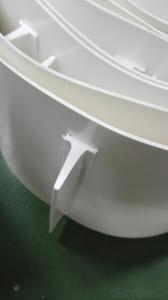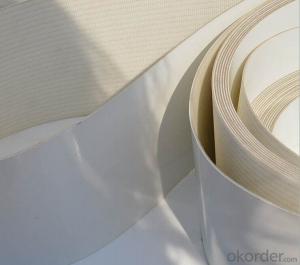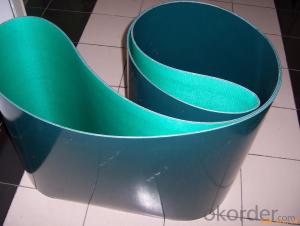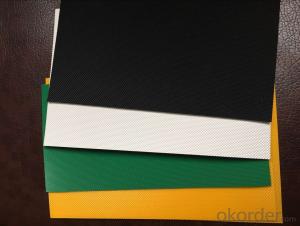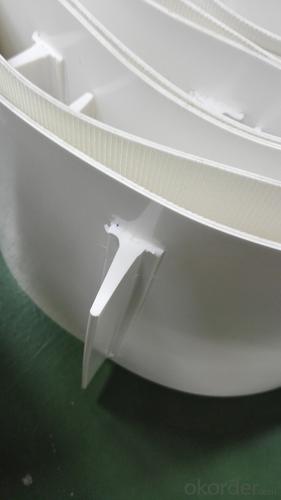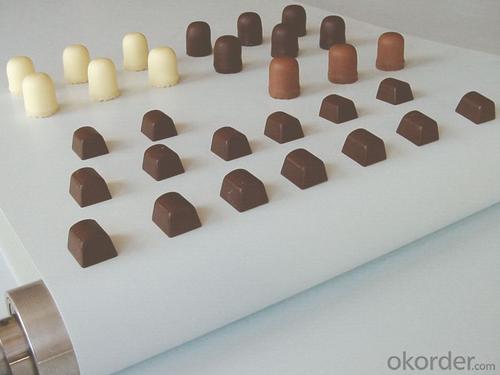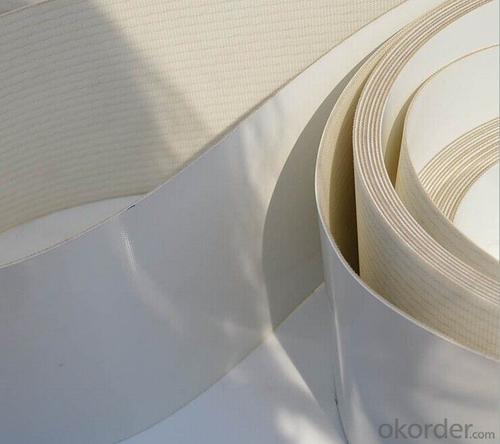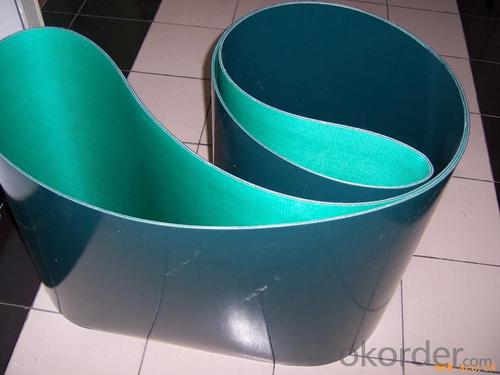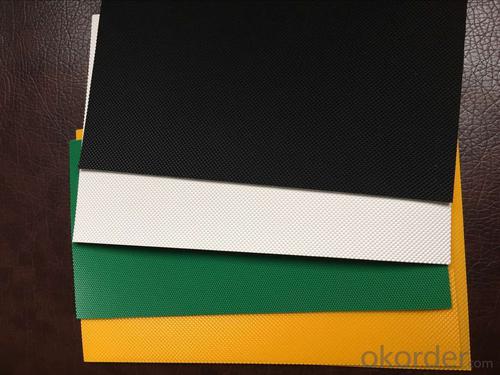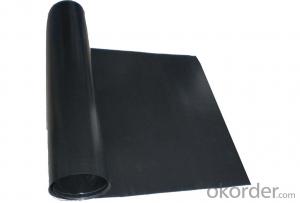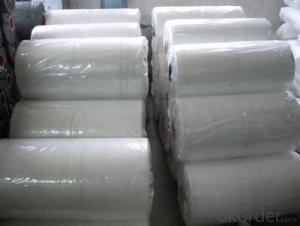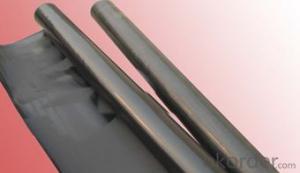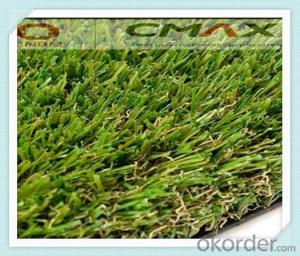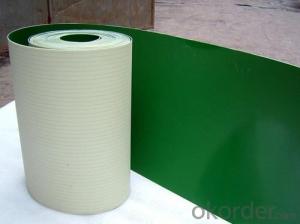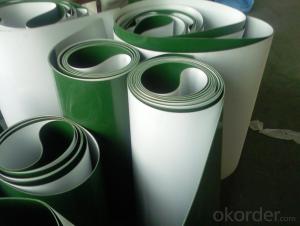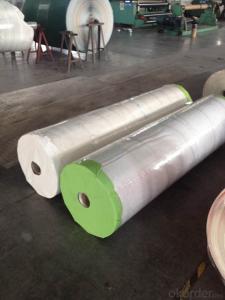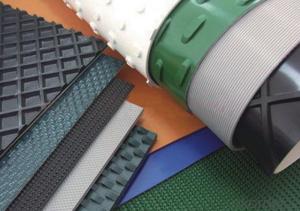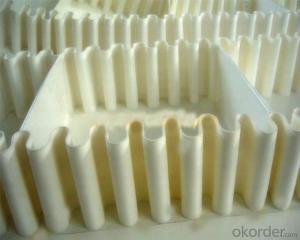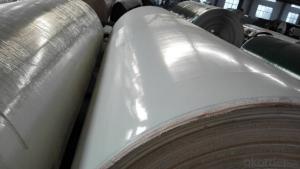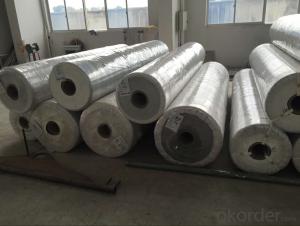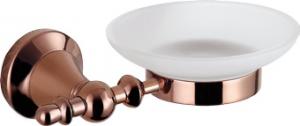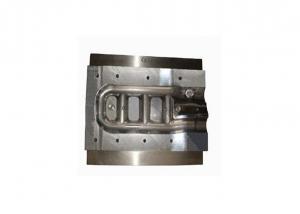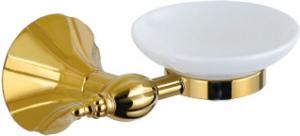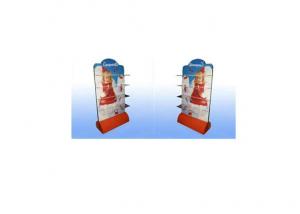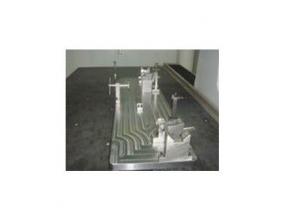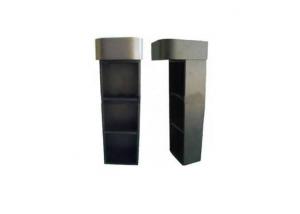PVC Conveyor Belt PU Conveyor Belt Food Processing Industry
- Loading Port:
- China main port
- Payment Terms:
- TT OR LC
- Min Order Qty:
- 10 m²
- Supply Capability:
- 100000 m²/month
OKorder Service Pledge
OKorder Financial Service
You Might Also Like
PVC Conveyor Belt PU Conveyor Belt Food Processing Industry
Food Processing Conveyor Belt
Food Processing Conveyor Belt Introduction
Food processing conveyor belt choose high quality high strength polyester fabric are the core, coated with PU or PVC as loading surface. With advantages of good flexibility, material environmental friendly, light duty, high tensile strength, anti oil, easy learning, our food processing conveyor belt meet EU and USA market requirements.
Food Processing Conveyor Belt Application
Food processing conveyor belt is widely used in food industry, such as vegetables, snack food, beer, sea food, etc.
Food Processing Conveyor Belt Advantage
Food processing conveyor belt is made of harmless material, no toxicity, no smell, anti-oil, easy cleaning, high tensile strength, good flexibility, light weight, solid and durable.
Food Processing Conveyor Belt Specifications

Thickness: PVC Belting (1~7mm) PU Belting (0.8~4mm)
Width: 200mm ~ 4000mm
Appearance: Flat surface, diamond pattern, lawn pattern, golf pattern,etc.
Colors: Green, blue, gray, white, black, blue, dark green, transparent,etc.
Subsequent machining technology: It can add baffle, skirt, sponge, guide bar,etc.
Food Processing Conveyor Belt Photos
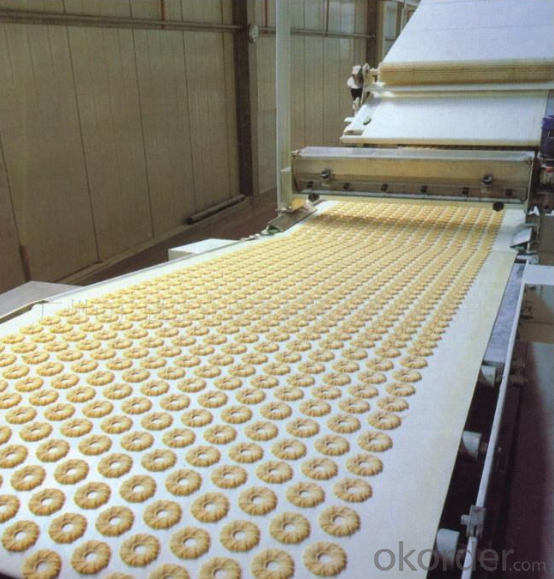
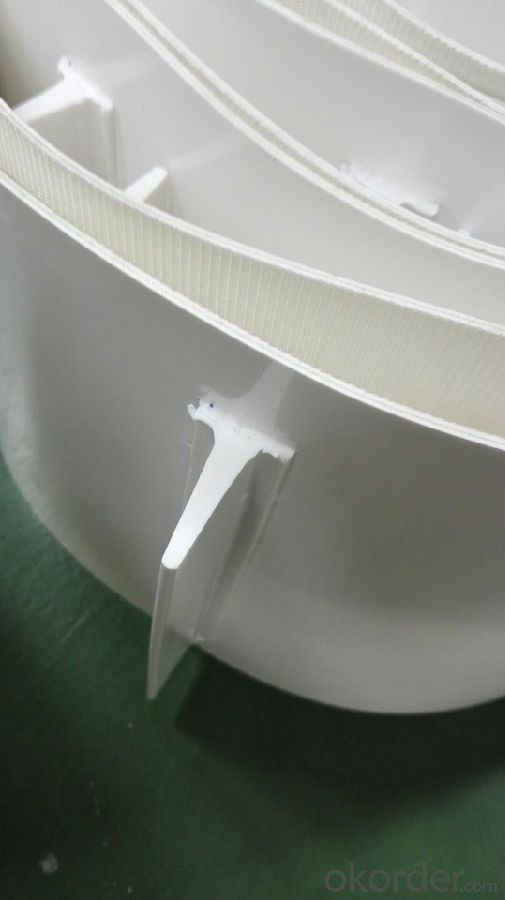
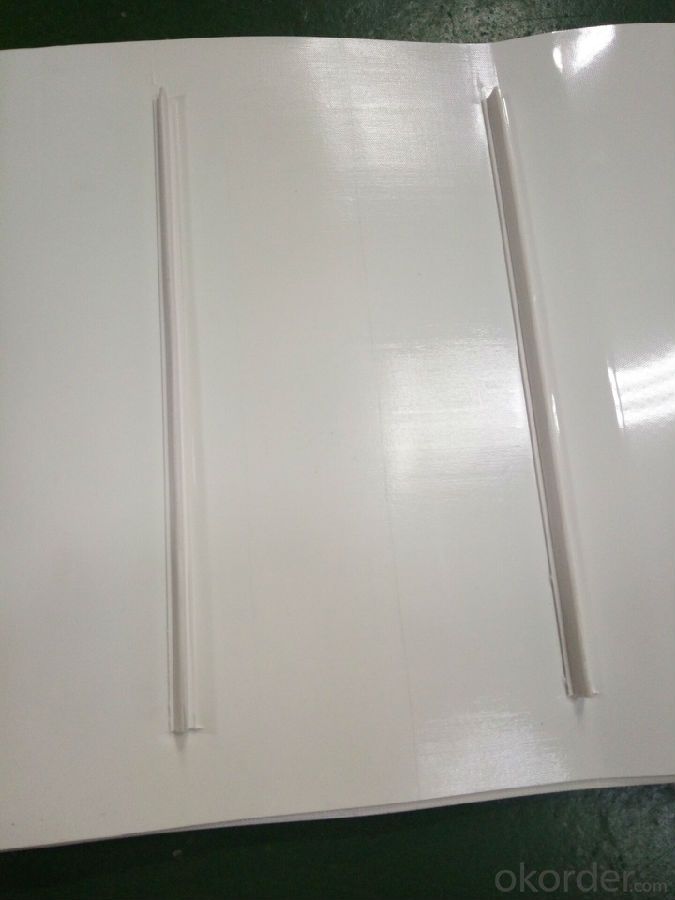
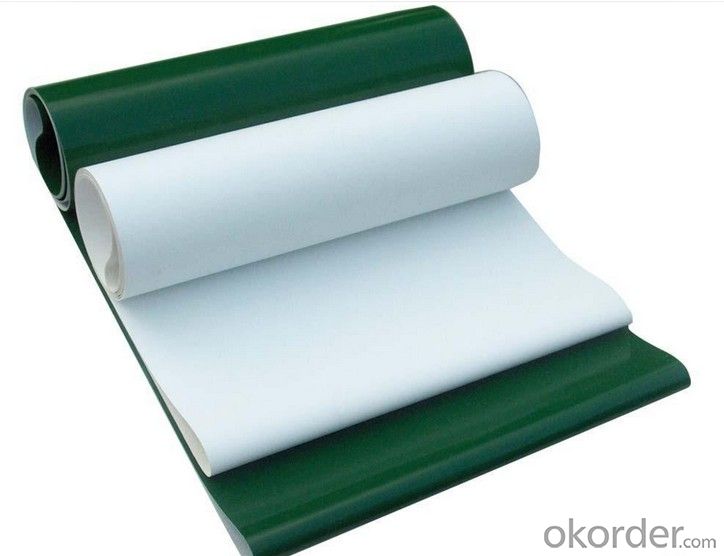
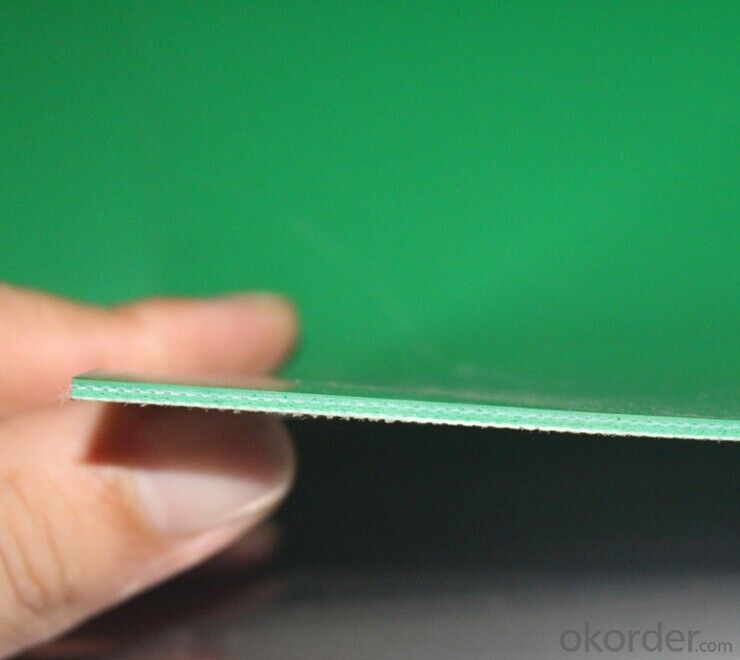
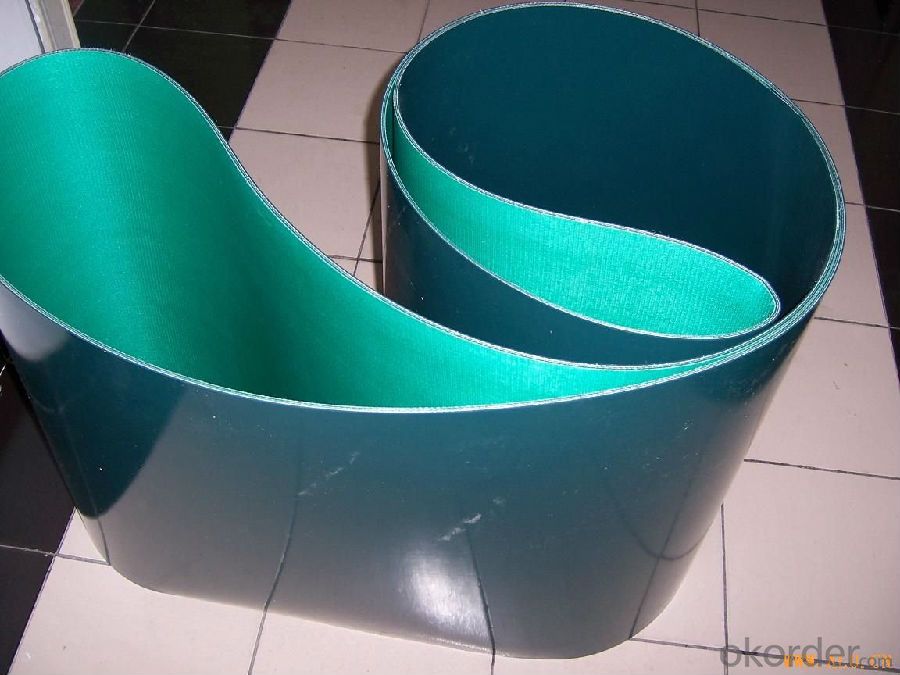
FAQ
1. Which payment do you accept?
For you convenience, our payment can be L/C, TT
2. Is free sample available?
We can supply free samples. You'll just need to pay for express cost.
3. How about your quality?
Quality is the first priority, we have strict quality control system.
1) All raw material we used are environmental freindly
2) Quality Control Department specially responsible for quality checking in each process. We make testing on incoming raw material and finished products. Your third party testing is also welcomed.
3) Skillful workers care every details in handling the producing and packing processes.
Our product quality is accepted by clients from all over the world. Warmly welcome your samples requirement or trail order.
- Q: Do olive nets affect the ripening process of olives?
- Yes, olive nets can affect the ripening process of olives. These nets are commonly used to protect olives from birds and other pests, but they can also impact the ripening process. By covering the olive trees, the nets reduce sunlight exposure, airflow, and temperature fluctuations, which can potentially slow down the ripening process. Additionally, the nets can create a more humid environment, increasing the risk of fungal diseases. However, when used appropriately and for a limited time, olive nets can still allow sufficient ripening and offer protection.
- Q: Can olive nets be used to reduce pesticide applications?
- Yes, olive nets can be used to reduce pesticide applications.
- Q: Are there several labels for edible plastics?
- At present, rarely used in food packaging, it is best not to buy: use this material at high temperature to produce harmful substances, even in the process of manufacturing it will release toxic substances enter the body with food, may cause cancer, birth defects and other diseases. At present, this kind of material has few containers for packing food. Never use it if it is in use.
- Q: Do olive nets protect the olives from pests or birds?
- Yes, olive nets do protect the olives from both pests and birds.
- Q: Can olive nets be used for decorative purposes in gardens?
- Yes, olive nets can be used for decorative purposes in gardens. They can be draped over plants or structures to add a unique and rustic touch to the garden. The nets can create a visually pleasing effect and can also serve as a functional element by protecting plants from birds or providing shade.
- Q: How do you repair the plastic surface that scratches?
- Buy a bottle of regular glue, a transparent one, and you can't see it when it is painted dry
- Q: Are olive nets resistant to extreme temperatures?
- Yes, olive nets are generally resistant to extreme temperatures.
- Q: How can lenses be made out of plastic or resin?
- Of course, the resin can be divided into many types, you can do is not transparent lenses, transparency, refractive index and wear resistance have higher requirements, like ordinary glass can do glasses, optical glass must be dedicated to. Although glasses are profiteering products, but the quality of high-grade lenses will be much cheaper than the quality
- Q: What kind of plastic material is special for microwave oven?
- Use: the only plastic box that can be placed in a microwave oven. It can be reused after careful cleaning. Special attention should be paid to some microwave oven boxes. The box is made of No. 5 PP, but the box cover is made of No. 1 PE. Because the PE can not withstand high temperature, it can not be put into the microwave oven with the box. For insurance purposes, put the container in front of the microwave oven and remove the lid first.
- Q: Are olive nets suitable for both traditional and modern olive farming practices?
- Yes, olive nets are suitable for both traditional and modern olive farming practices. Olive nets are used to collect falling olives during the harvest season, whether they are manually shaken from the trees or mechanically harvested. This method is common in both traditional and modern olive farming practices, making olive nets a versatile and effective tool for olive farmers.
Send your message to us
PVC Conveyor Belt PU Conveyor Belt Food Processing Industry
- Loading Port:
- China main port
- Payment Terms:
- TT OR LC
- Min Order Qty:
- 10 m²
- Supply Capability:
- 100000 m²/month
OKorder Service Pledge
OKorder Financial Service
Similar products
Hot products
Hot Searches
Related keywords
